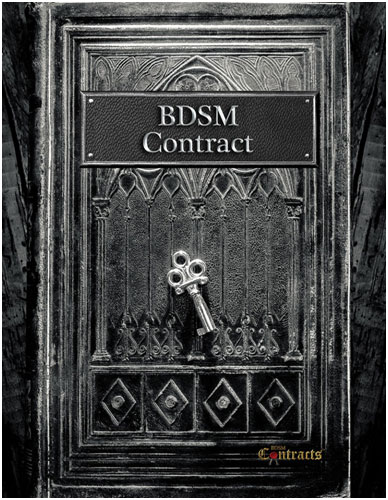Guide To Being A Dominant
There’s often confusion about the role of being a dominant, especially a BDSM relationship, so let’s clear the air with our Guide To Being A Dominant.
When you’re looking at a chastity lifestyle, or considering involving a chastity device into your bedroom play then the dominant is the one with the keys to the device. Commonly referred to as the keyholder in a chastity relationship. The confusion lies within the sense of power.
The concept of a “dominant” often stirs mixed feelings for many, stemming either from unrealistic expectations or from a skewed perception that dominants exert control over every facet of another’s life. Such views, however, don’t capture the full essence of what it means to be a dominant. This exploration aims to demystify the role of a dominant, highlighting not only their responsibilities but also what embodying this role truly involves. Just as a dominant has their duties, so too does a submissive. Together, these roles create a dynamic where both parties understand and fulfill their unique responsibilities.

Exploring Roles in BDSM: Beyond Definitions
Distinguishing Relationships from Scenes
At the heart of BDSM lies a nuanced understanding of relationships versus scenes. A relationship embodies mutual affection and love between two individuals, whereas a scene might be a play session that occurs within this partnership or includes additional participants for specific fantasies. This distinction allows for a rich tapestry of experiences, where committed and monogamous bonds coexist with open arrangements that welcome others to fulfill diverse desires.
The Interplay of Tops and Dominants
While the terms ‘top’ and ‘dominant’ often intertwine, their roles within BDSM are distinct yet interconnected. A top takes on an active role during a scene, employing techniques ranging from sensual to psychological, including activities like flogging, bondage, and humiliation. The dominant, on the other hand, orchestrates the scene or relationship’s dynamics, holding the reins of control. This could mean directing a partner to act as a top or engaging a third participant, thus shaping the encounter’s direction.
Navigating Complexity with Clarity
The dominant, or top, emerges as the guiding force, whether within the intimate confines of a relationship or the charged atmosphere of a scene. This role is not confined to physical control but extends to psychological dominance, setting the tone and direction. It’s crucial to recognize that being a dominant, or a top is not tied to gender or sexual orientation; it’s a role that transcends these constructs, allowing for a diversity of expressions within BDSM dynamics.
Embracing Fluidity in Power Dynamics
Understanding these roles is key to appreciating the complexity and beauty of BDSM relationships. Dominants and tops navigate a world where control, consent, and mutual satisfaction converge, crafting experiences that resonate on a deeply personal level. This exploration into BDSM roles reveals a landscape rich with possibility, where every participant has the power to define their journey.

Evolving Roles: The Dynamic Realm of Dominance
The Fluid Nature of Dominance
The role of a dominant can shift dramatically over time or across relationships. In the vast world of BDSM, what resonates for one may differ markedly for another, despite shared interests in specific types of play. The scope of a dominant’s authority can range from temporary command during intimate encounters to comprehensive governance over a partner’s daily life, with myriad variations in between.
Master or Mistress: A Spectrum of Control
Dominants wielding extensive control are often termed masters or mistresses, a role not confined to age or gender dynamics. A mature individual might find themselves eagerly embracing submission, while someone young and outwardly innocent could wield surprising dominance. This contrast highlights the rich diversity within BDSM dynamics, where appearances often mask deeper truths about power and control.
The True Essence of Power
Contrary to perceptions shaped by mainstream depictions, such as those in hardcore films, the real power in a BDSM relationship doesn’t rest solely on the dominant. Instead, the dominant’s primary duty is to safeguard and cherish their submissive, ensuring unwavering safety and consent. In this delicate dance, the submissive holds profound control, empowered to halt any scene with a pre-agreed safe word, mandating the dominant’s immediate compliance.
Understanding Dominant Responsibilities
The responsibilities assigned to a dominant can vary significantly, often formalized within relationship contracts or understood implicitly between partners. These duties, ranging from setting boundaries to nurturing the submissive’s growth, underscore the depth and complexity of the dominant’s role. While the language of such agreements may seem formal, it’s the underlying intent that matters most—fostering a relationship built on trust, respect, and mutual fulfillment.
Embracing the Journey Together
BDSM relationships offer a canvas for exploration, defined not just by the roles individuals assume, but by the evolving dynamics between them. Whether through formal agreements or shared understanding, the responsibilities of a dominant reflect a commitment to the well-being and empowerment of both partners, marking a journey of discovery, challenge, and profound connection.

The Pillars of Dominance: Guiding Lights in BDSM
1. Trust: The Foundation of Power Exchange
Trust in BDSM is sacred. A submissive’s surrender is a precious gift, not a commodity to misuse. A dominant bears the crucial responsibility of honoring this trust, never exploiting or betraying it. In every decision, a dominant must consider the wellbeing of both parties, avoiding selfish impulses. A submissive’s confidence hinges on this trust, knowing they are in capable hands should they face uncertainties or challenges.
2. Guidance: Navigating Desires Together
A dominant’s role extends to recognizing and nurturing the submissive’s needs and fantasies, not imposing their own unless they align. This guidance is about exploration and mutual fulfillment, ensuring that the journey is rewarding for both.
3. Control: The Essence of Dominance
True dominance is mastery over oneself before exercising control over another. A dominant who lashes out in anger betrays the essence of BDSM and crosses into abuse. Self-control is paramount, as it underpins the ability to safely and effectively manage the dynamic.
4. Communication: The Bridge to Understanding
Clear communication is non-negotiable. A dominant must actively engage in discovering and respecting their submissive’s desires, setting boundaries and expectations transparently. This dialogue is a two-way street, essential for growth and satisfaction within the dynamic.
5. Safety: The Top Priority
Ensuring safety is fundamental. A dominant must diligently learn their submissive’s limits and steadfastly adhere to them, safeguarding the physical and emotional welfare of all involved.
Bringing It Home: Chastity Dynamics
Consider a chastity relationship as an example. Engaging in chastity play isn’t as simple as locking a device and walking away. It’s about setting clear expectations, discussing roles, and navigating challenges together. Missteps may occur, especially initially, but through open communication, you can align expectations with reality, ensuring a fulfilling experience. This principle applies universally: both dominants and submissives bear responsibilities when respected, create a balanced and enriching dynamic.


